What Dissolves POR-15 Fuel Tank Sealer?

POR-15 fuel tank sealer cannot be dissolved by any common solvent. This product is a durable urethane coating designed to resist all chemical breakdown. Mechanical removal methods such as grinding, sanding, or sandblasting are the practical ways to remove it. Thermal methods and specialized abrasive cleaning like dry ice blasting can help as well. Chemical solvents may soften or partially degrade the coating but do not fully dissolve it.
Understanding POR-15 Fuel Tank Sealer
POR-15 is a urethane-based coating used extensively to seal and protect gas tanks. It creates a hard, chemical-resistant film once cured. This urethane type glue is similar in durability to products like Gorilla Glue. Its chemical resistance is intentional, allowing it to protect metal from corrosion and fuel damage, as well as resist solvents commonly found in fuel systems.
Because of its tough nature, typical solvents or chemicals cannot break down POR-15 once it has cured. This property makes it ideal as a tank sealer but makes removal challenging.
Why Solvents Do Not Work
POR-15 forms long polymer chains that crosslink, creating a structure that does not dissolve in routine solvents. This hardness is comparable to trying to dissolve radiator sealants or other tough protective coatings. Most commonly available solvents will neither swell nor break the polymer matrix significantly.
- Acetone and naphtha: While acetone is a powerful solvent and naphtha can dissolve many oils and resins, they do not dissolve POR-15 but may soften the surface slightly.
- Dimethylformamide (DMF): Known to dissolve certain polyurethanes, DMF might affect POR-15 but presents significant health and environmental risks and is not a practical solution.
- Dichloromethane (Methylene Chloride): This strong solvent may help soften or soak the coating but does not guarantee complete dissolution, and safe handling is essential.
- Aircraft stripper or Citri-Strip: These chemical strippers can degrade coatings over time but require a lot of mechanical scraping afterward.
- Sodium Hydroxide (NaOH): Its effectiveness remains unclear and may damage surrounding materials.
Mechanical Removal Options
Due to the chemical resistance of POR-15, physical removal is often mandatory. Several methods are available:
- Sanding or grinding: Abrasive tools can wear down the coating, but caution is required to prevent sparks near fuel vapors.
- Sandblasting: Using abrasive media to strip the coating is a preferred method for many professionals.
- Dry Ice Blasting: This technique uses frozen CO2 pellets blasted at the surface to crack and remove the coating.
Dry ice blasting is effective because the subzero temperatures cause the polymer chains to become brittle and crack. Unlike traditional sandblasting, dry ice is nonabrasive to metal surfaces. Adding mild abrasives like baking soda or walnut shells can increase effectiveness without damaging the base metal.
Portable dry ice blasters are available at moderate prices, enabling DIY users or professionals to remove POR-15 mechanically without harsh chemicals.
Thermal Methods
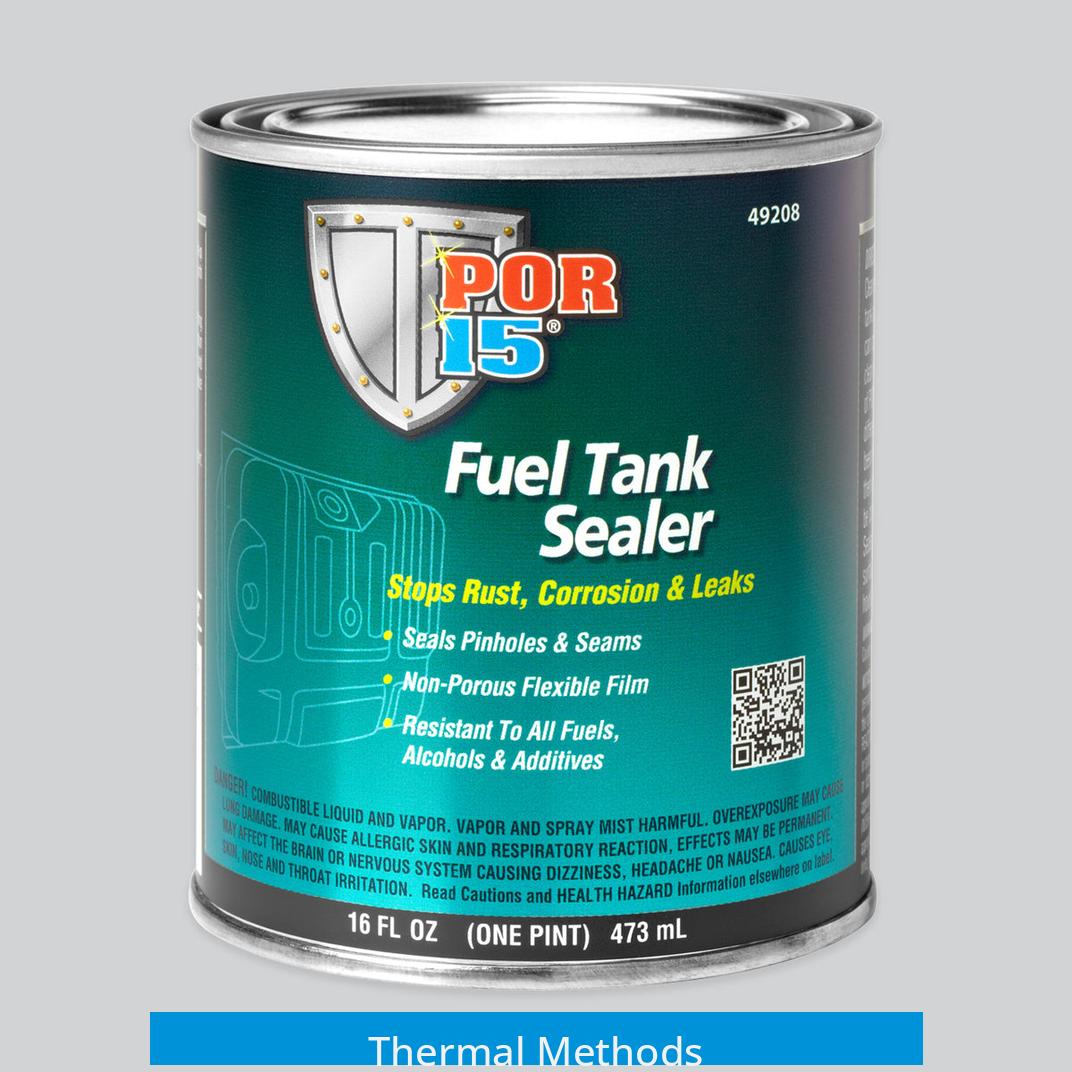
Heating can soften POR-15 temporarily. However, this approach has drawbacks:
- Heat does not break down the polymer chemically but only makes it pliable.
- High temperatures or open flames can burn the coating to ash, which then needs to be removed.
- Burning raises safety concerns including toxic fumes and fire risks, especially near gas residues.
- Use thermal treatments only on metal tanks completely drained of fuel and vapors.
A common thermal method involves torching the tank exterior once fuel and vapors are fully cleared, resulting in the POR-15 turning to ash within approximately 15 minutes.
Alternative Approaches
If full removal proves too difficult or risky, painting over POR-15 is a viable option. Fresh paint adheres well to clean, POR-15-coated surfaces. This approach works when the goal is aesthetic improvement or additional protection rather than structural restoration.
Safety Considerations
Working with POR-15 removal involves several safety issues:
- Any work on fuel tanks must ensure complete fuel drainage and ventilation to avoid ignition hazards.
- Sparks from grinding or sanding near residual fuel vapors pose extreme fire risks.
- Chemical solvents like methylene chloride or DMF require protective gear and proper disposal methods due to toxicity and environmental regulations.
- Thermal methods necessitate controlled environments to manage smoke and fumes.
Ensure proper personal protective equipment (PPE) including gloves, masks, and eye protection when handling chemicals or abrasive removal methods.
Summary of Effective POR-15 Removal Techniques
| Method | Effectiveness | Safety Concerns | Notes |
|---|---|---|---|
| Chemical Solvents (Acetone, Naphtha) | Low to moderate (soften only) | Low, common solvents but ineffective | May be used with abrasives for slight surface removal |
| DMF / Methylene Chloride | Moderate (partial degradation) | High, toxic and environmentally unfriendly | Not common or recommended for casual use |
| Mechanical Removal (Grinding / Sanding) | High (physical removal) | Medium (spark/fire risk) | Requires proper ventilation and safety measures |
| Sandblasting | High | Medium (dust and debris) | Effective at scale; may damage delicate tanks |
| Dry Ice Blasting | High | Low to medium | Nonabrasive, effective, preserves tank integrity |
| Thermal Burning | High (full removal by ash) | High (fire risk, fumes) | Suitable only for metal tanks, well-ventilated |
| Painting Over | Not removal, but practical | Low | Does not remove POR-15 but improves appearance |
Key Takeaways
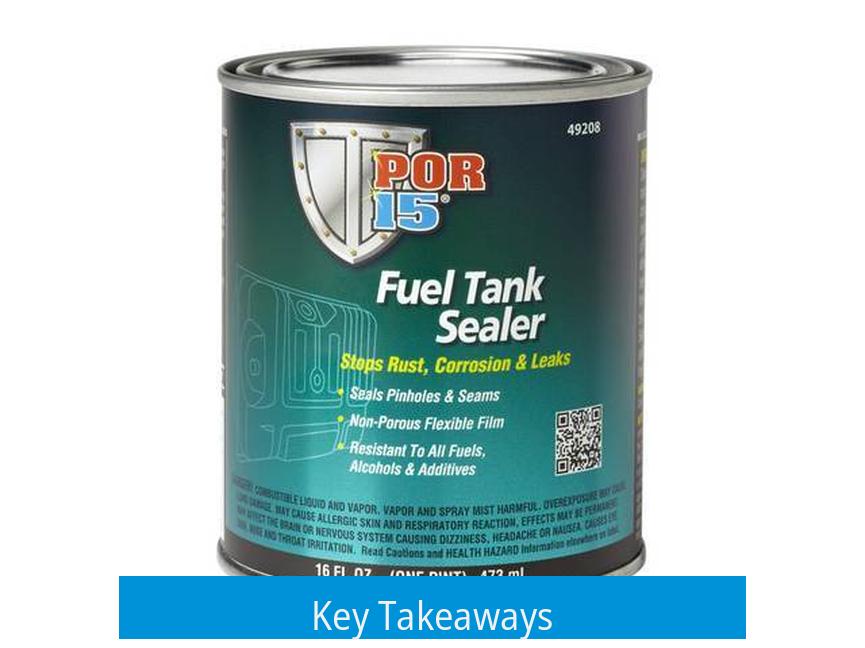
- POR-15 fuel tank sealer resists dissolution by all common solvents.
- Mechanical removal methods like sanding, grinding, or sandblasting are necessary.
- Dry ice blasting offers an effective, non-damaging option to soften and remove PET-15.
- Toxic chemical solvents might reduce POR-15 but involve hazards.
- Thermal burning removes the coating but requires strict safety precautions.
- Painting over POR-15 works when removal is impractical.
- Always prioritize safety when working around fuel tanks and coatings.
What Dissolves POR-15 Fuel Tank Sealer? The Definitive Guide
Here’s the blunt truth: nothing really dissolves POR-15 fuel tank sealer easily. This stuff is a tough urethane glue, famously stubborn and chemical-resistant. It’s designed this way—to put a permanent, durable fix on gas tanks. So, if you’re hoping for a magic solvent, brace yourself: you won’t find one. However, there are clever ways to soften or remove it, though not without effort.
POR-15’s nature explains why it’s so tough to get rid of. It shares a chemical toughness similar to Gorilla Glue, making it almost invincible to common solvents. Imagine trying to dissolve a radiator sealant—that’s the kind of unyielding finish you’re dealing with. In essence, it’s built to stay. The good news? You have options beyond chasing a miracle liquid dissolver.
Why solvents don’t cut it—and what you can try
Most common solvents won’t budge POR-15. Acetone and naphtha are reliable on many coatings, and naphtha even appears as a component in some POR-15 mixes. A surfactant to break surface tension can help, maybe even sanding with a bit of sand mixed in for abrasion. But in truth, these are all half-measures. Some folks talk about dimethylformamide (DMF), a solvent known to attack polyurethanes like POR-15, but it’s nasty stuff—think toxic and environmentally unfriendly. Probably a last resort.
Others have tried aircraft stripper or Citri-Strip with patchy success. Expect a slow, messy battle needing plenty of scraping afterward. Dichloromethane (methylene chloride) is rumored to soak and weaken the coating. You can find it online, but be cautious—the health risks and regulations are serious.
Sodium hydroxide (NaOH) is a wild card here. It won’t harm steel but might attack rubber seals or other components. There’s no clear confirmation that it digests POR-15, so it’s a gamble.
Mechanical methods: The real workhorse solutions
Since chemical dissolving is mostly a dead end, mechanical removal takes the spotlight. Sanding and grinding will almost always be necessary. But caution! Sparks near a gas tank are a fire hazard. This is no DIY for the faint-hearted.
Sandblasting is often the preferred mechanical technique. It grinds away the sealer effectively and prepares the surface if you plan to repaint or reseal. However, it requires equipment and expertise.
Why dry ice blasting might be your secret weapon
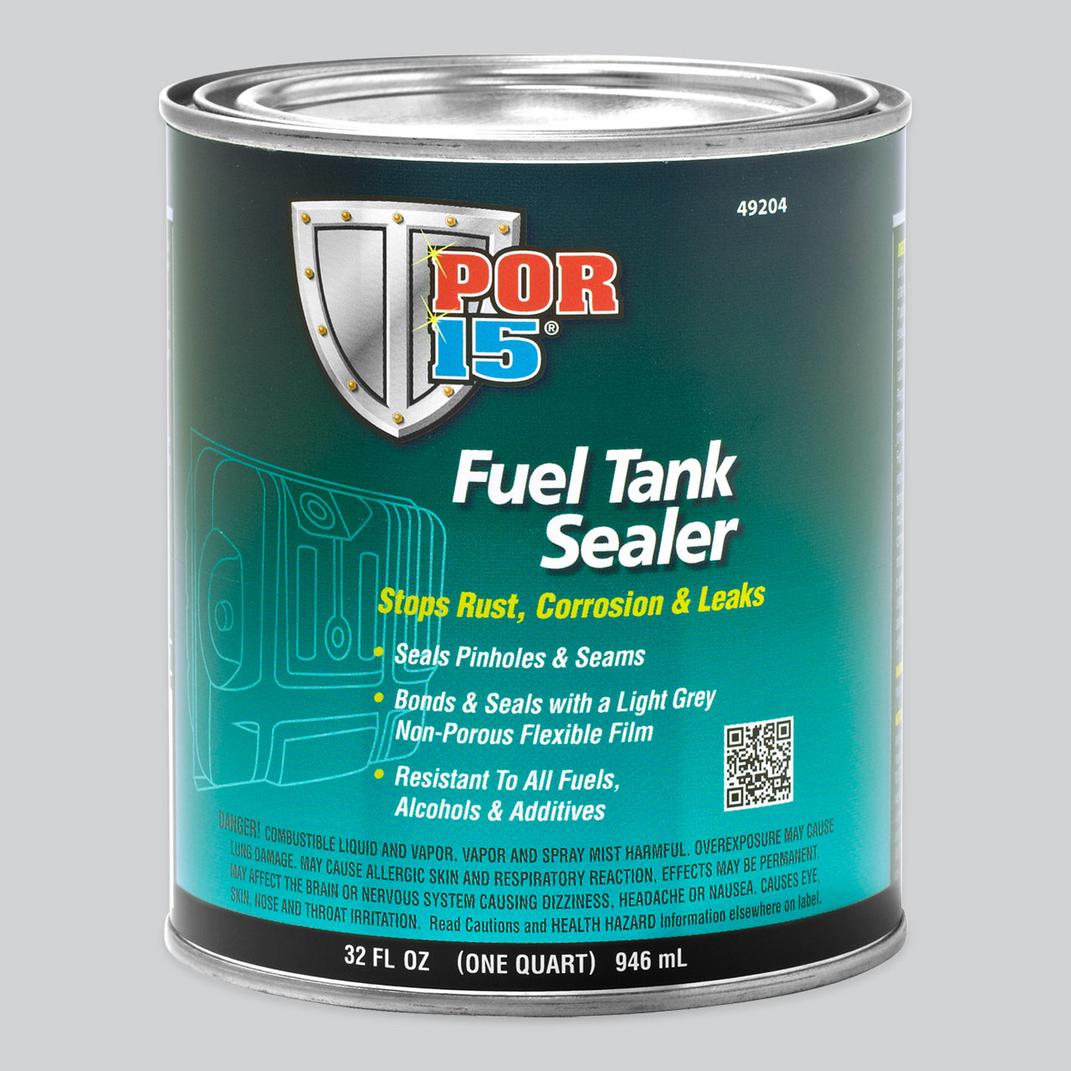
If you want something gentler but effective, dry ice blasting stands out. This method blasts the tank surface with tiny pellets of frozen carbon dioxide. The subzero temps make the hardened urethane brittle, causing microscopic cracks that help chip it away without damaging your metal tank.
This is how it works: the CO2 freezes the polymer chains, making them easier to break off. Dry ice blasting is less harsh than sandblasting and won’t wear down the tank’s metal. You might even add baking soda or crushed walnut shells for extra grit.
Dry ice blasting might sound high-tech, but Harbor Freight sells portable machines for about $40! Or maybe find a local specialist who offers the service. It’s a neat, efficient method that limits mess and damage. Perfect if you want to keep your tank intact and need a professional-grade solution.
Thermal removal: Playing with fire—literally
Heating can soften POR-15, but it rarely solves the problem alone. If you have a metal tank, you can try burning off the sealer with a torch—*after removing all fuel and fumes*. One story told of someone tossing their tank on a big bonfire for 15 minutes until the coating turned to ash. Extreme? Yes. Effective? Absolutely! But risky and not for anyone without proper safety precautions.
Heating the tank risks warping or damaging it, so this method is generally last-resort or when you plan to scrap the tank afterward.
Painting over POR-15: A practical alternative
Here’s a trick if removal sounds like a nightmare: just paint over it. Provided the surfaces are clean and prepped, fresh paint sticks well. This bypasses the whole removal headache and keeps the tank sealed and protected. Not glamorous, but sometimes the easiest choice.
Safety considerations you cannot ignore
- Always ensure the tank is empty and free of fumes before any mechanical or thermal work.
- Keep sparks and open flames away unless you’re using thermal removal with extreme caution.
- Properly collect and dispose of any chemical wash or abrasives; POR-15 isn’t biodegradable.
- Wear protective gear when handling harsh solvents like methylene chloride or DMF.
Summary—What really dissolves POR-15 fuel tank sealer?
| Method | Effectiveness | Pros | Cons |
|---|---|---|---|
| Solvents (Acetone, Naphtha, DMF, Methylene Chloride) | Low to Moderate | Readily available (some), works on polyurethane | Toxic, incomplete removal, messy, health risks |
| Mechanical (Grinding, Sanding, Sandblasting) | High | Reliable, thorough removal | Dusty, sparks hazard, needs equipment |
| Dry Ice Blasting | High | Gentle on metal, environmentally friendly | Requires equipment or specialist |
| Thermal (Burning or Heating) | High | Complete removal | Fire risk, potential tank damage |
| Painting Over | Moderate | Simple, quick, no removal necessary | Does not remove sealer, only covers |
So, what exactly dissolves POR-15 fuel tank sealer? Strictly speaking, nothing dissolves it fully. You must rely on mechanical methods, dry ice blasting, or thermal removal for actual elimination. Solvents can soften or weaken it but won’t melt it away. Painting over remains a good backup plan if removal proves too tough.
Ready to tackle that stubborn tank? Now you know the smartest, safest moves—and can dodge rookie mistakes like chasing phantom solvents that don’t exist. Remember safety, gear up, and maybe bring a fire extinguisher, just in case.
Got any POR-15 horror stories or success tales? Share them below! What method worked (or didn’t)? The car restoration community loves swapping tips and tricks.
What solvents can dissolve POR-15 fuel tank sealer?
POR-15 is a urethane coating that no common solvent can fully dissolve. Some users try acetone, naphtha, or dimethylformamide, but none guarantee complete removal.
Can mechanical methods remove POR-15 from a fuel tank?
Yes. Sanding, grinding, or sandblasting can remove POR-15. Dry ice blasting is effective and less damaging to the tank surface.
Is heating or burning a good way to remove POR-15?
Heating can soften POR-15 slightly, but burning off the coating is more effective. This requires careful safety steps to avoid hazards.
Are harsher chemicals like methylene chloride effective on POR-15?
Dichloromethane (methylene chloride) might help break down POR-15. However, it is hazardous and requires caution during use.
Can you just paint over POR-15 instead of removing it?
Yes, if the surface is clean, fresh paint will adhere well to POR-15. This can be a practical choice when removal is too difficult.


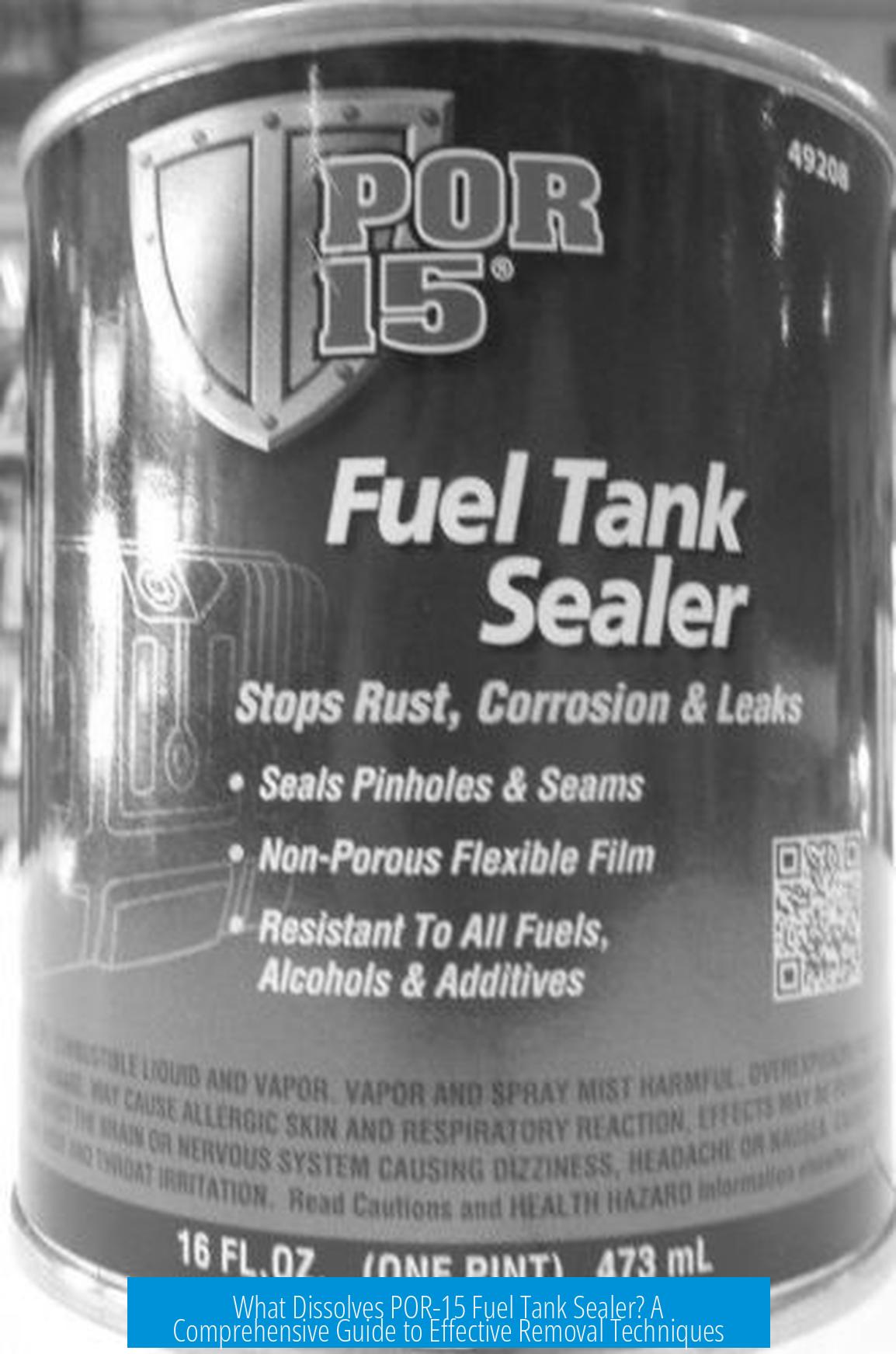
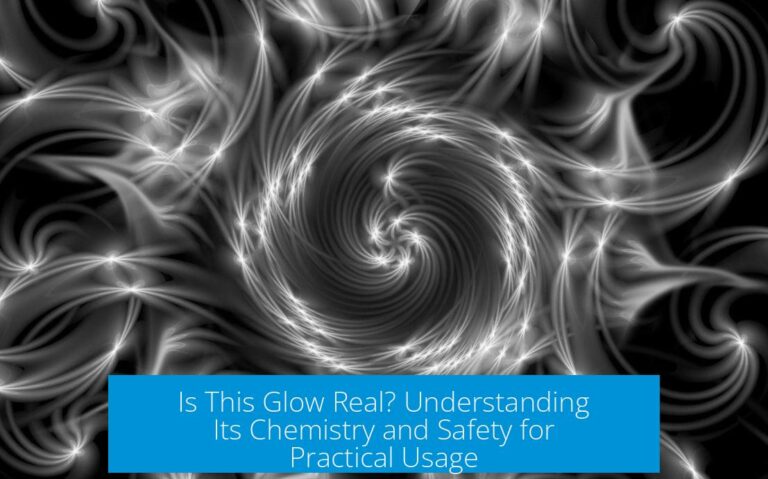
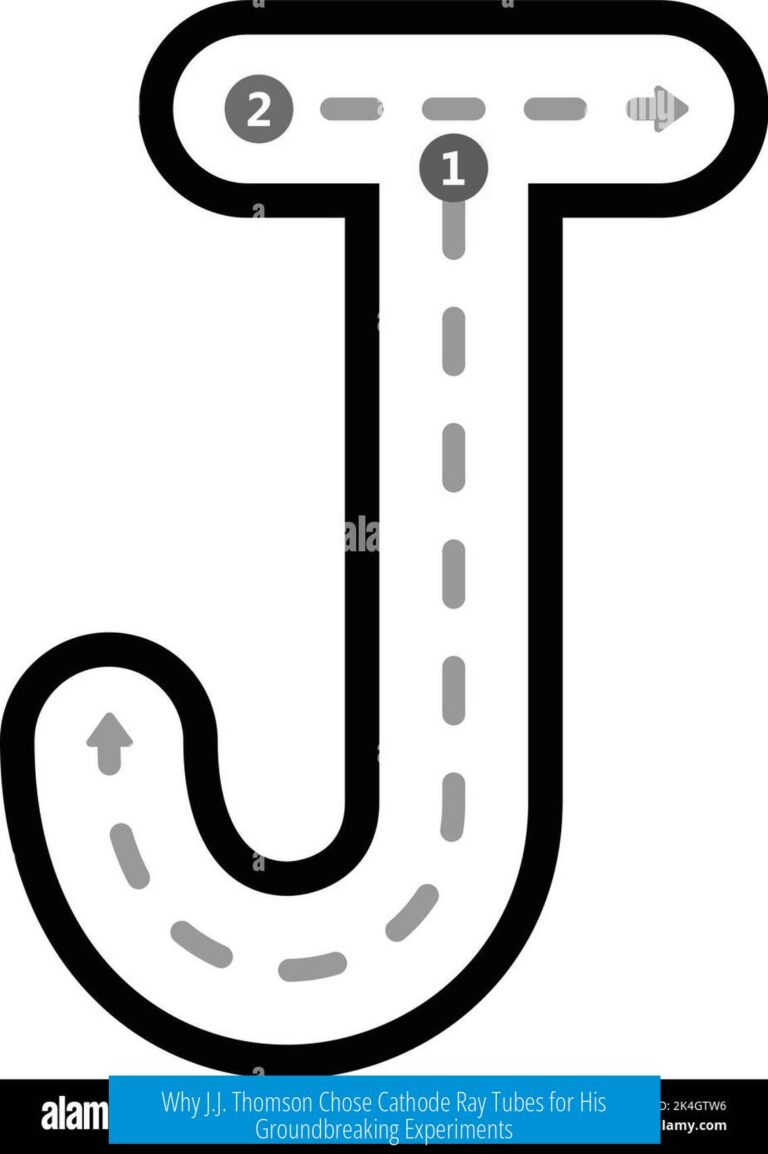
Leave a Comment